Julia
Julia is a high-level, high-performance, dynamic programming language designed for scientific computing and data science. It combines the programming productivity of Python and R with the speed and performance of C and Fortran.
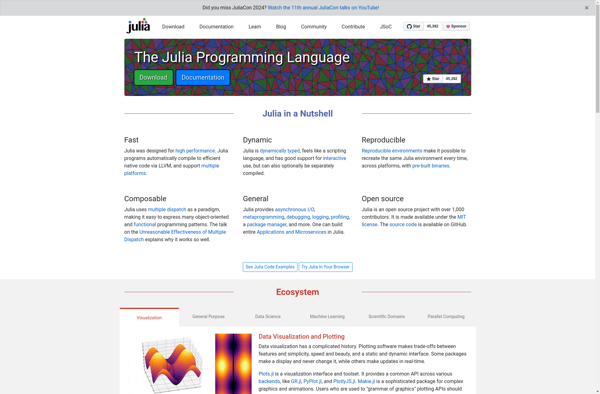
Julia: High-Performance Dynamic Programming Language
High-level, high-performance language for scientific computing and data science, combining productivity of Python/R with speed/performance of C/Fortran
What is Julia?
Julia is an open-source, high-level, dynamic programming language designed for scientific computing and data science. Some key aspects of Julia:
- High-performance JIT compiler that allows Julia to approach and often match the speeds of C and Fortran
- Dynamically typed, feels like a scripting language but with the speed of a compiled language
- Designed from the ground up for parallelism and distributed computing
- Powerful package ecosystem making it easy to import and use libraries
- Uses multiple dispatch as a paradigm, making function overloading easy
Julia provides the high-level productivity and ease of use of Python and R, combined with the performance and speed of low-level languages like C/C++ and Fortran. With its JIT compiler, Julia bridges the ease of scripting languages with the speed of compiled languages. It's an excellent choice for numerical, scientific, and high-performance computing.
Julia Features
Features
- High-level dynamic programming language
- Designed for high-performance numerical analysis and computational science
- Open source with a package ecosystem
- Just-in-time (JIT) compiler that gives it fast performance
- Good for parallel computing and distributed computing
- Integrates well with Python and C/C++ code
Pricing
- Open Source
Pros
Very fast performance compared to Python and R
Easy to learn for Python/R users
Open source with large package ecosystem
Good for numerical computing and data science
Multi-paradigm (procedural, functional, object-oriented)
Interactive REPL environment
Cons
Smaller user community than Python/R
Less extensive libraries than Python/R
Not as widely used in industry as Python/R yet
Official Links
Reviews & Ratings
Login to ReviewThe Best Julia Alternatives
Top Development and Programming Languages and other similar apps like Julia
Here are some alternatives to Julia:
Suggest an alternative ❐Python
Python is a high-level, general-purpose programming language that emphasizes code readability and rapid application development. It was created by Guido van Rossum in 1991 and has since become one of the most popular programming languages.Some key features of Python include:Easy to learn syntax that resembles everyday EnglishInterpreted language that can...
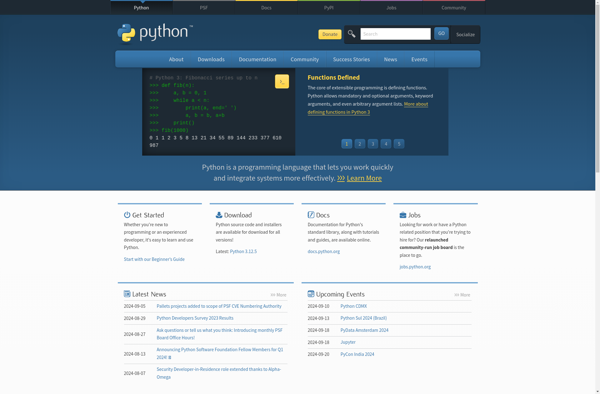
R (programming language)
R is an open-source programming language and free software environment for statistical computing, bioinformatics, graphics, data science, and general-purpose programming. The R language provides a wide variety of statistical analysis techniques and graphical capabilities which make it a popular choice for data analysis and visualization.Some key features of R include:Open-source...

C#
C# is an object-oriented, general-purpose programming language developed by Microsoft. It was first released in 2002 as part of the .NET framework, and since then has become one of the most popular programming languages used for building a wide range of applications.Some key features of C# include:Object-oriented - Supports concepts...
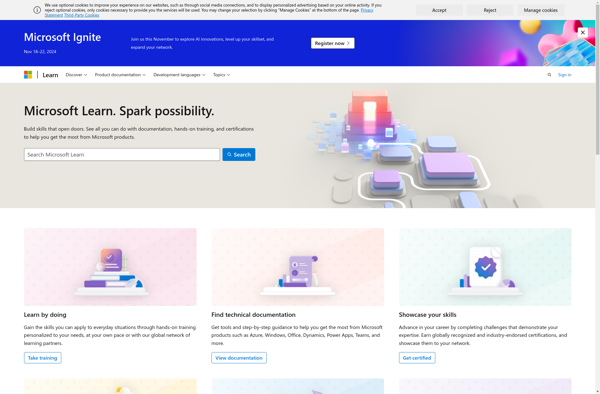
Mathematica
Mathematica is a computational software program developed by Wolfram Research. It is used for symbolic and numerical mathematics, data visualization, image processing, and a wide range of technical computing applications.Some key features of Mathematica include:A symbolic algebra engine that can manipulate mathematical expressions, solve equations, simplify expressions, compute derivatives and...
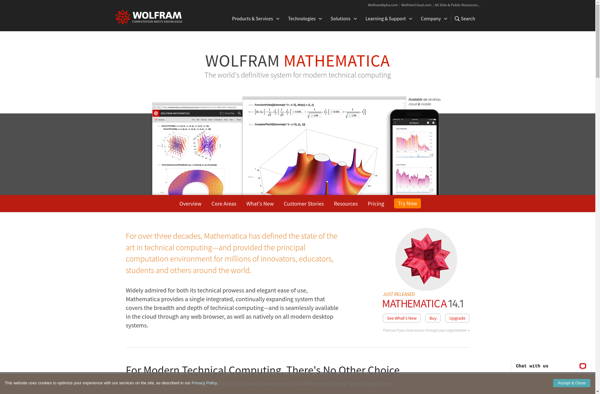
MATLAB
MATLAB (matrix laboratory) is a multi-paradigm numerical computing environment and proprietary programming language developed by MathWorks. MATLAB allows matrix manipulations, plotting of functions and data, implementation of algorithms, creation of user interfaces, and interfacing with programs written in other languages.Some key features of MATLAB include:Matrix and array-oriented language for faster...
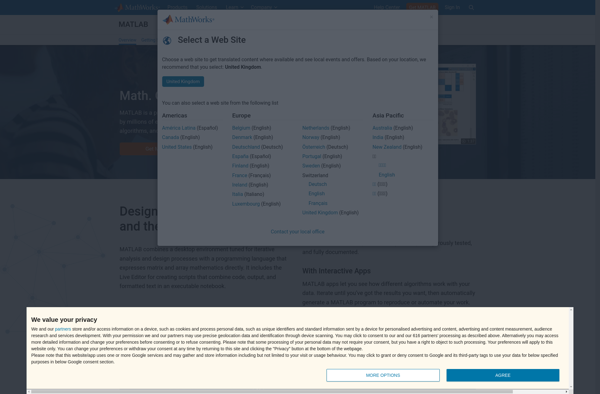
Maple
Maple is a proprietary computer algebra system or CAS designed for mathematical computation and modeling. It was first developed in 1980 by the Symbolic Computation Group at the University of Waterloo in Canada.Some of the key capabilities Maple offers include:Algebraic manipulation - simplify expressions, solve equations, factor polynomials, compute limits,...
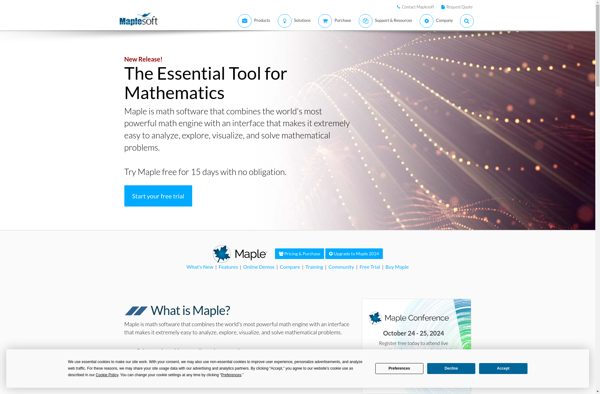
Scilab
Scilab is an open source, cross-platform numerical computational package and a high level, numerically oriented programming language. It provides an interpreted programming language, linear algebra operations, numerical optimization, signal processing features, and the ability to plot functions and data.Originally created in 1990 by researchers from INRIA and ENPC in France,...
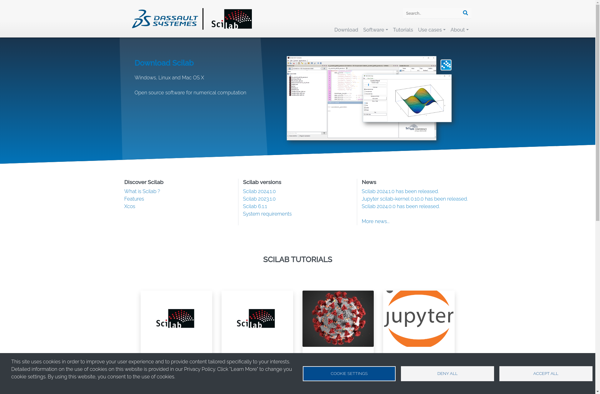
GNU Octave
GNU Octave is an open-source mathematical programming language and environment that is compatible with MATLAB. It allows users to perform numerical computations, data manipulation and visualization, and other mathematical tasks. Some key features of GNU Octave include:An extensive library of mathematical functions for linear algebra, differential equations, optimization, statistics, and...
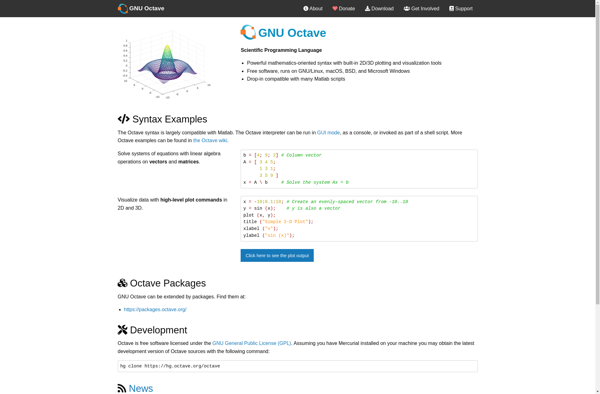
NumeRe
NumeRe is an open-source platform for numerical computing, data analysis, and scientific visualization. It provides a MATLAB-like environment and programming language focused on matrix operations, linear algebra routines, statistical analysis, and plotting. Some key features of NumeRe include:Fast vector/matrix math operations through integration of BLAS and LAPACK librariesA high-level scripting...

Maxima
Maxima is a feature-rich open source computer algebra system that provides capabilities for symbolic computation and mathematical modeling. First released in 1968, Maxima descends from DOE Macsyma, one of the oldest such systems still in use and development today.Some of the key features and capabilities of Maxima include:Symbolic manipulation of...
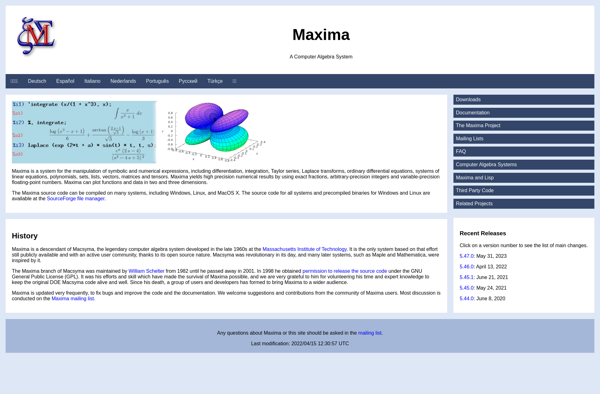
SageMath
SageMath is an open-source mathematics software system that provides a viable free open source alternative to Magma, Maple, Mathematica and MATLAB. It is based on Python and implements a huge range of mathematics functionality including:Algebra - including commutative algebra, group theory, combinatorics, graph theory, exact linear algebra, and moreCalculus -...
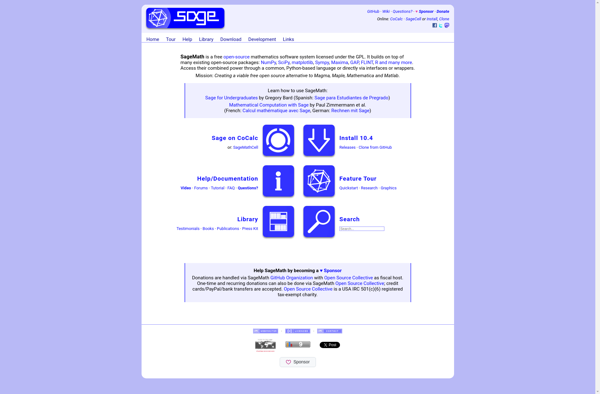
Smalltalk
Smalltalk is an object-oriented, dynamically typed, reflective programming language. It was created in the 1970s at Xerox PARC by a team led by Alan Kay. Smalltalk was designed to explore object-oriented programming and create a highly interactive programming environment. Its key characteristics include:Everything in Smalltalk is an object. All code...
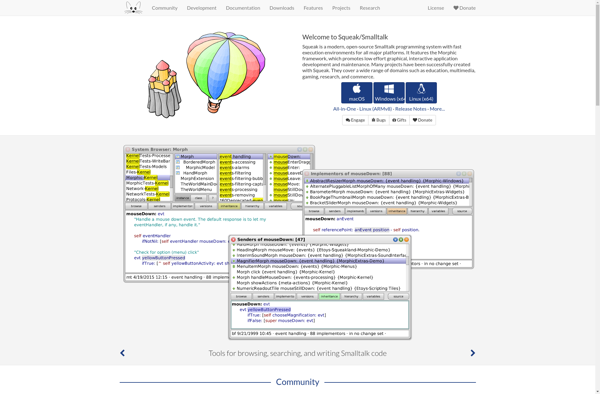
Collimator
A collimator is a device that is used to narrow a beam of particles or waves by blocking peripheral rays and only allowing the focused beam to pass through. It has many uses across different fields:- In optics, a collimator can collimate light, x-rays or gamma rays into a narrow...

Calcpad
Calcpad is a free calculator application for Windows designed to provide simple math and conversion functionalities with a clean and minimalist user interface. It serves as an alternative to the default Windows calculator app for users who prefer a lightweight program specifically for calculation tasks.The Calcpad calculator layout consists of...

Fortran
Fortran is a general-purpose, procedural, imperative programming language that is especially suited for numeric computation and scientific computing applications. Originally developed by IBM in the 1950s, Fortran was one of the first high-level programming languages and quickly came to dominate programming in the areas of numeric analysis and computational science.The...
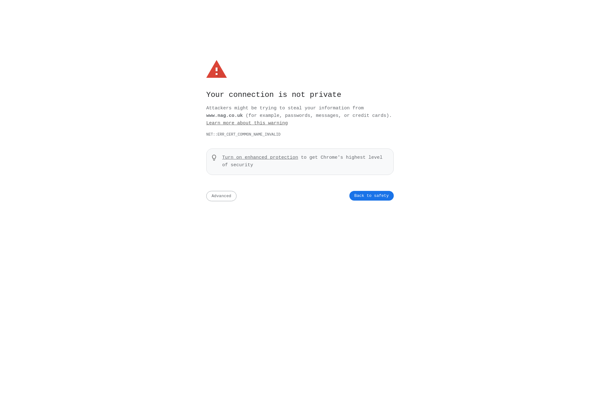
MathStudio
MathStudio is a comprehensive software environment and programming language for mathematical computation, data analysis, visualization, and algorithm development. It integrates numerical, symbolic, and graphical capabilities which allow users to solve problems, analyze data, develop algorithms, and create interactive applications.Some of the key features of MathStudio include:Powerful mathematical engine that can...
V (programming language)
V (pronounced 'vee') is an open source programming language designed for building maintainable and performant software. It was created by Alexander Medvednikov and first released in 2017.Some key features and goals of V include:Simplicity - easy to learn syntax similar to Go, Python, and TypeScriptFast compile times - compiles extremely...

Altair Compose
Altair Compose is a low-code development platform that empowers users to build cloud-native applications quickly without needing to write any code. It features an intuitive drag-and-drop interface that allows anyone to assemble pre-built components into full-stack workflows, integrations, web applications, and mobile apps.Some key capabilities and benefits of Altair Compose...

Pike programming language
Pike is a dynamic programming language originally developed in the early 1990s by Fredrik Hübinette and others at the Royal Institute of Technology in Sweden. The syntax and general style of Pike is heavily influenced by C, meaning Pike programmers find it easy to get started if they have experience...
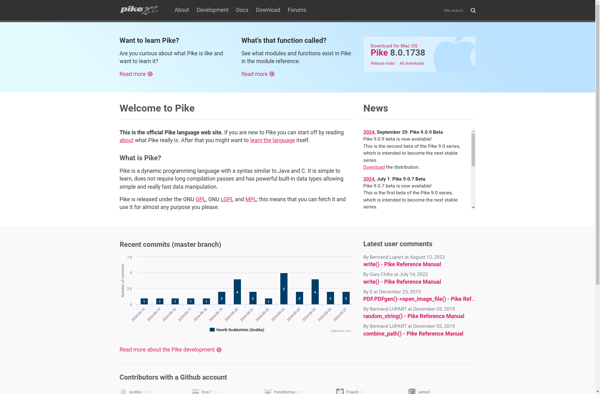
ScicosLab
ScicosLab is an open-source software suite for numerical computation that specializes in the modeling and simulation of dynamical systems. It features a user-friendly graphical interface based on block diagrams, allowing users to easily construct models by dragging and dropping blocks representing system components.Some of the key capabilities and features of...
Yacas
Yacas is an open-source computer algebra system written in C++. It provides a flexible environment for symbolic and numerical mathematical computations. Some of the key features of Yacas include:Symbolic manipulation of mathematical expressions involving variables, functions, matrices, tensors, etc.Numerical evaluation of expressions with arbitrary precision floating point or complex numbersBuilt-in...
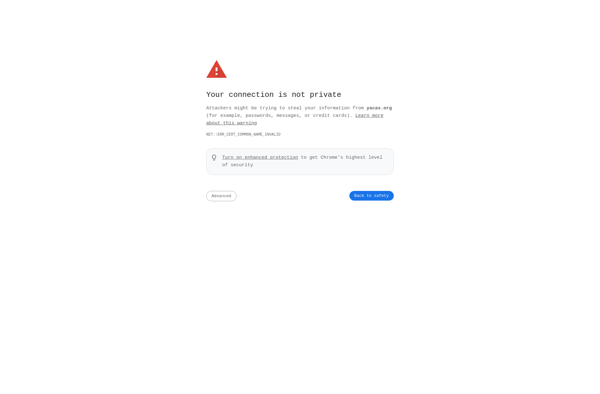
Beef Programming Language
Beef is an esoteric, interpreted programming language created in 2007 for entertainment rather than practical use. Inspired by the cow programming language COW, Beef uses cow-related terms and syntax to allow programmers to write code that looks like English sentences.Some key features of Beef include:Use of cow-related terminology like moo,...

Jabaco
Jabaco is an open-source project management and bug tracking software that serves as an alternative to Atlassian's Jira. It provides similar features for agile development teams to plan, track, and release software projects.Some of the key features of Jabaco include:Kanban boards for visualizing work status and tracking progressCustom workflows to...

GDscript
GDscript is a high-level, dynamically typed programming language used to create video games, applications, and tools inside the Godot game engine and development environment. It was specifically designed by the Godot team to be integrated with the engine and enable high flexibility and functionality for 2D and 3D game development.GDscript...

Huginn Programming Language
Huginn is a new open-source programming language designed specifically for building artificial intelligence (AI) systems. Unlike general-purpose languages like Python or Java, Huginn is optimized for rapidly creating AI agents that can learn, reason, and interact with humans.Key features of Huginn include:A syntax similar to natural language, making it easy...
